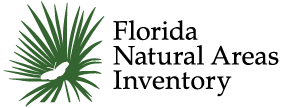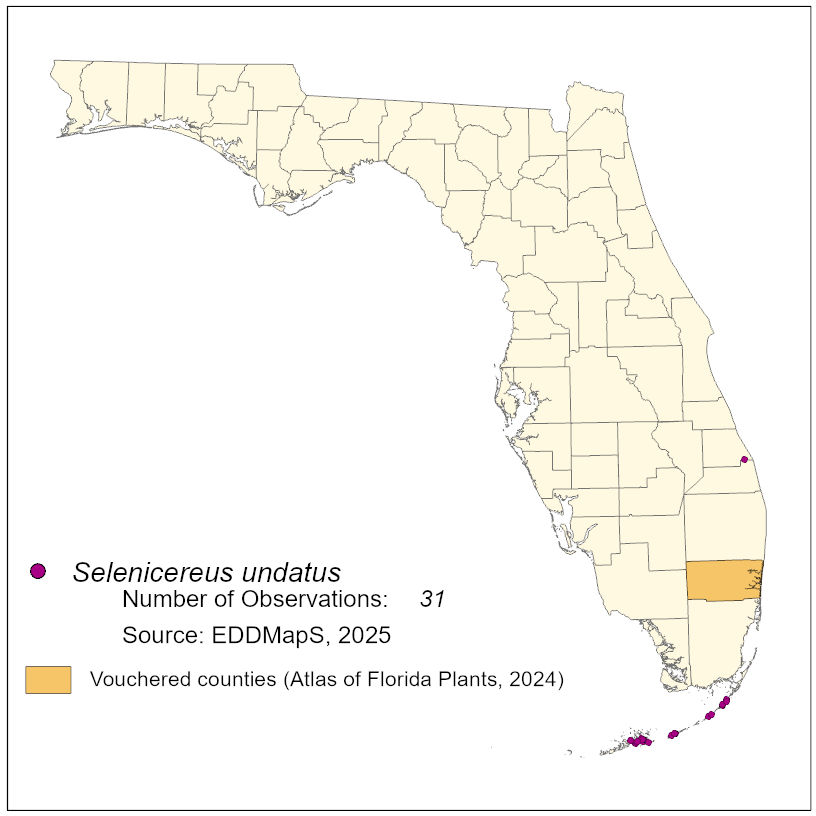Selenicereus undatus


Common Name: nightblooming cactus
Family: Cactaceae
Common Synonyms: Hylocereus guatemalensis
USDA Hardiness Zone: 10a-11
Growth Habit: Terrestrial or epiphytic cactus
Origin: Tropical America
FISC Category: -
FDACS Listed Noxious Weed: No
Introduction Date: Earliest Florida specimen vouchered in 1962
IFAS Assessment:

A large sprawling or vining, terrestrial or epiphytic cactus with aerial roots. Stems are green, 3-winged, and grow up to 5 m long (in mature plants), 4 to 7.5 cm, margins undulate. Spines in clusters of 1 to 3(- 5) and up to 1 cm long, typically 2-3 mm long. Flowers are ornate, 25-35 cm long by 30 cm across, white with green outer tepals and bracts. Flowers bloom only at night and last just one night.
Disturbed areas
Planted for production of dragon fruit. Shade tolerant, can invade hammocks.

NA
Dave's Garden. 2014. PlantFiles: Red Pitaya, Hylocereus undatus. http://davesgarden.com/guides/pf/go/54131/. Accessed on June 20, 2014.
Queensland Government. 2014. Weeds of Australia, Night-blooming cactus, Hylocereus undatus. http://keyserver.lucidcentral.org/weeds/data/03030800-0b07-490a-8d04-0605030c0f01/media/Html/Hylocereus_undatus.htm. Accessed June 28, 2014.
Wunderlin, R. P., and B. F. Hansen. 2008. Atlas of Florida Vascular Plants (http://florida.plantatlas.usf.edu/).[S. M. Landry and K. N. Campbell (application development), Florida Center for Community Design and Research.] Institute for Systematic Botany, University of South Florida, Tampa.